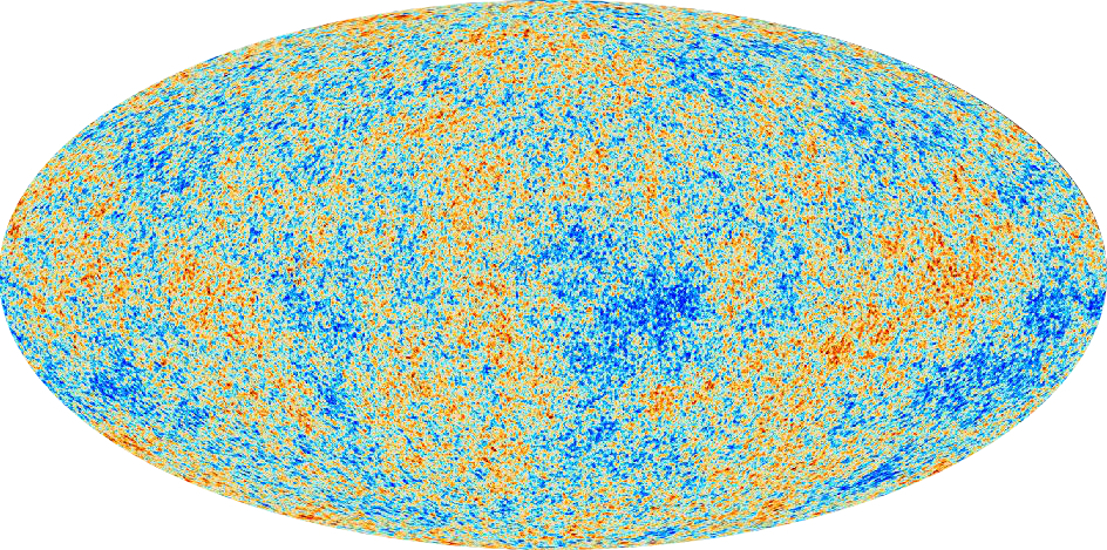
 Credit: ESA and the Planck Collaboration
Credit: ESA and the Planck Collaboration
Relic
The Big Bang started the Universe on its path from an initially hot, dense state to its current cold, nearly empty state. At an important point in the history of the Universe, newly-created electrons combined with newly-created hydrogen and helium nuclei; when this happened relic radiation, which had previously been efficiently scattered by unbound electrons, was now able to stream throughout the now transparent Universe. Theorists suggested that this radiation should have a characteristic temperature, in the present epoch, of only a few degrees celsius above absolute zero, a prediction that was validated by the COBE satellite observatory. This relic radiation, from an almost but not quite uniform early Universe, has imprinted upon it variations from the gravitational seeds which grew into the strands of galaxies we now see around us. The Wilkinson Microwave Anisotropy Probe, or WMAP, provided the best measures of these fluctuations, and helped us understand how the cosmic web was spun. Now a new mission, called Planck, has been measuring these anisotropies at even finer spatial scales than WMAP. Planck has shown the Universe to be slightly older than previously thought, and has possibly confirmed the "axis of evil" first seen by WMAP. Planck will further test cosmological models, with unprecedented sensitivity and angular resolution, and may even help shed light on whether or not the Universe underwent a strange period of inflation early on in its history.
Published: March 25, 2013
<
HEA Dictionary ● Archive
● Search HEAPOW
● Other Languages
● HEAPOW on Facebook
● Download all Images
● Education ● HEAD
>

Each week the HEASARC
brings you new, exciting and beautiful images from X-ray and Gamma ray
astronomy. Check back each week and be sure to check out the HEAPOW archive!
Page Author: Dr. Michael F. Corcoran
Last modified Monday, 26-Feb-2024 17:36:22 EST


